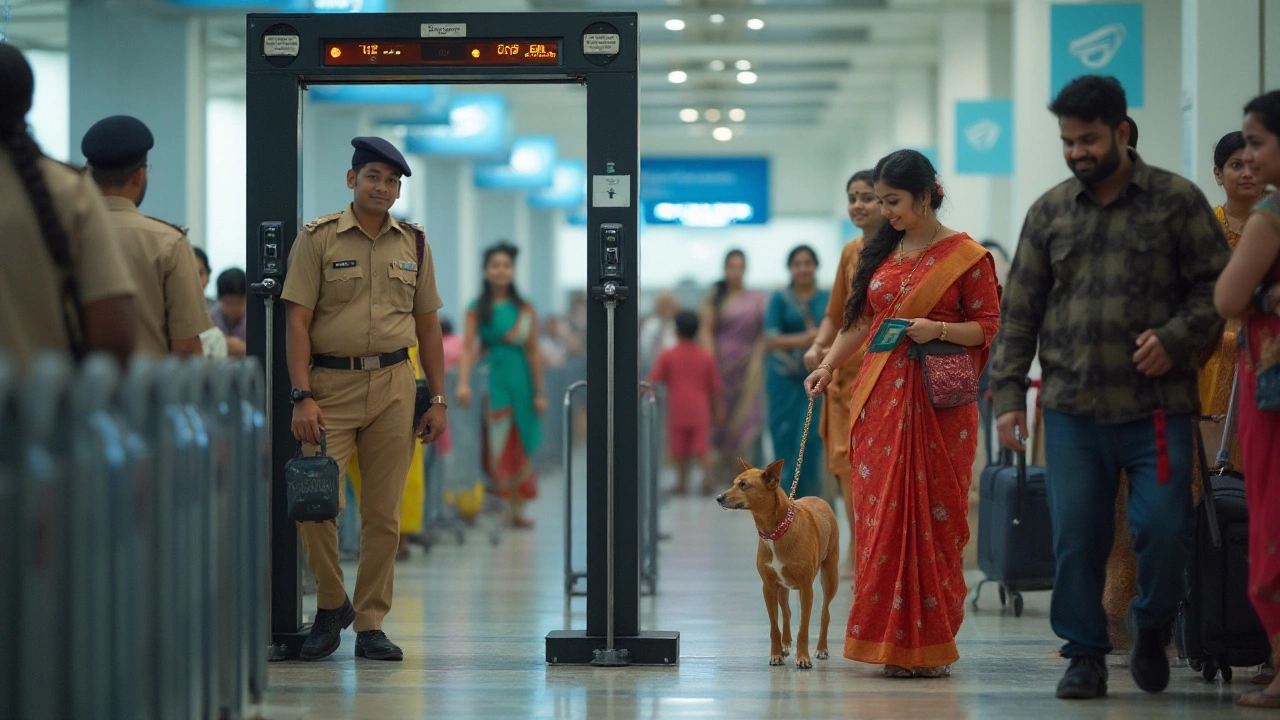
Traveling with pets can be a daunting experience, especially when faced with airport security checks. But understanding TSA procedures can turn that dreaded trip into a walk in the park. Whether you're jet-setting with your dog or cat, knowing what the Transportation Security Administration expects from you and your furry companion is crucial.
This guide demystifies the process, shedding light on how to smoothly navigate checkpoints and what preparations you can make to ease the journey for both you and your pet. From choosing the perfect carrier to keeping anxiety levels in check, we've got you covered. Picture a journey where everything goes as planned, and you and your pet arrive at your destination ready for adventures. Let's make that picture a reality.
- Understanding TSA Pet Policies
- Preparing Your Pet for Travel
- The Airport Security Checkpoint Experience
- Choosing the Right Pet Carrier
- Special Considerations and Tips
Understanding TSA Pet Policies
Traveling with a pet can be an enjoyable adventure if you are familiar with the TSA procedures that apply to your furry friend. Information is power, and knowing how the TSA manages the screening process for pets can help you and your pet breeze through airport security without a hitch. At the heart of these policies is the focus on safety for all, including our four-legged companions.
First and foremost, the TSA allows small pets to travel in the cabin with their owners, provided they meet specific requirements. Your pet travel experience begins at home. Ensure that your pet can fit comfortably in a well-ventilated pet carrier that fits under the seat in front of you; this is crucial for both the safety and comfort of your pet as well as adherence to TSA guidelines. Specific airlines might have their own additional regulations, so it's advisable to double-check with them beforehand, ensuring a seamless experience from home to flight.
Once at the airport, pets must be checked, just like your carry-on items. As you approach the security checkpoint, you will need to remove your pet from its carrier. The carrier itself will go through the X-ray machine, similar to other luggage. Meanwhile, the TSA officer will guide you and your pet through the metal detector. It's crucial to have a clean collar or harness, free of any metal elements, to avoid unnecessary alarms. This step might seem awkward at first, but practicing calmness will help reassure your pet.
Despite the chaos that airports often symbolize, TSA officers are trained to handle pets professionally and compassionately. They understand that a security screening can be stressful for animals and have protocols in place to treat pets as gently as possible. This process is not only to ensure the safety of passengers but also to guarantee that pet owners can travel peacefully with the knowledge that the authorities are experienced in these scenarios. According to a report by the American Veterinary Medical Association, "in 2019 alone, more than 2 million pets traveled by air in the United States, showing the importance of clear and caring procedures in pet travel."
For those traveling with traveling pets that are categorized as emotional support animals, additional documentation might be required. These papers should prove the necessity of keeping the pet close during travels. Since policies on emotional support animals have evolved recently, it's wise to contact the airline weeks ahead of your trip to confirm you have everything needed. Taking these steps perhaps a month before travel allows for corrections if necessary, bringing peace of mind as vacation draws near.
Moreover, understanding that not all pets might cope well with the stresses of air travel is essential. Some pets might benefit from a veterinarian consultation prior to travel to discuss potential calming techniques or medications. This proactive step ensures the drive to the airport, and the flight itself, are not traumatic experiences for your pet, making your trip a joyous occasion from start to finish.
In conclusion, being informed about the specific TSA guidelines and taking the right preparatory steps can transform pet travel into an organized and stress-free experience. Understanding and navigating these procedures for both you and your furry friend's benefit makes trips more enjoyable, ensuring your adventures together are memorable for all the right reasons.
Preparing Your Pet for Travel
When it comes to embarking on a journey with your furry friend, there's more to it than simply booking a flight. Preparing your pet for travel requires careful attention and thoughtful planning. Start with a visit to the vet. This is crucial to ensure that your pet is in good health and up to date on vaccinations. Airlines may require health certificates, so it's best to get this sorted early. Aside from vaccinations, talk to your vet about how your pet might handle flying. They can offer advice on managing anxiety or motion sickness, which are common concerns for pet travelers. It's important to note that some breeds, particularly brachycephalic breeds like bulldogs and Persian cats, may face respiratory challenges during flights.
Acclimating your pet to their travel crate or carrier is another critical step. This is not just about selecting the right size and type—though these are important considerations—but also about helping your pet become comfortable with the space. Make the carrier a familiar, calming haven long before the travel date. Leave the crate open at home with treats or toys inside and encourage your pet to explore it voluntarily. Positive reinforcement can help transition the carrier from a source of unease to a place of comfort. Think about adding one of your T-shirts to the carrier space, as your scent can have a soothing effect on many pets.
Packing Your Pet's Essentials
As you prepare for travel, packing for your pet is as important as packing for yourself. Ensure to include their regular diet. Abrupt changes in food can lead to stomach issues, especially during stressful periods like travel. It's a great idea to pack sufficient food along with their feeding bowl. Portable water dishes can be especially handy as well. Having water accessible during your travel is crucial to keeping your pet hydrated. Don’t forget special items that provide your pet comfort or fun, whether it's a beloved toy or a cherished blanket. These add a layer of familiarity and help ease any travel anxiety.
Consider labeling all of your pet's items with identification not just for safety, but as a precaution in the off chance you become separated. Some pet owners also opt for temporary travel tags with information specific to their journey. Include your destination address or even a contact number unique to that day's travels. In the words of the American Pet Products Association, "Ease your pet into travel mode by providing them with the best comfort items and a gradual introduction to the travel carrier."
“Travel isn’t just about arriving at a destination; it’s about the journey,” said Dr. Emily Ramirez, a notable veterinarian in the field. “And ensuring a pet’s journey is as smooth as it can be starts long before reaching the airport.”
Routine Adjustment
Before taking to the skies, shift your pet's routine slightly to mirror what travel day might be like. Adjusting feeding times to align with your departure schedule can help reduce stress. If the travel day means an early start, practice waking your pet up early for several days leading up to it. This helps not only the pet but also you in understanding the timelines. Additionally, exercise is a fantastic tool leading up to the flight. A well-exercised pet is often a tired and relaxed pet. Plan for a good play session or a nice walk before heading to the airport. This release of energy can contribute to more harmonious travel.
Maintaining a Calm Mindset
Your pet likely picks up on your mood, so it’s important to stay calm and relaxed as much as possible. Ease anxieties by sticking to familiarities, whether it's a consistent morning routine or cherished good-byes at your departure point. Remember, the calmer you are, the calmer your pet is likely to be. Encourage relaxation during your travels by using commands your pet recognizes. Treats are a fantastic incentive for remaining composed both for you and your pet. The travel experience for your pet can be significantly enhanced by taking these thoughtful steps. Understanding their needs, preparing accordingly, and maintaining a positive outlook can make traveling an adventure both you and your pet can enjoy.
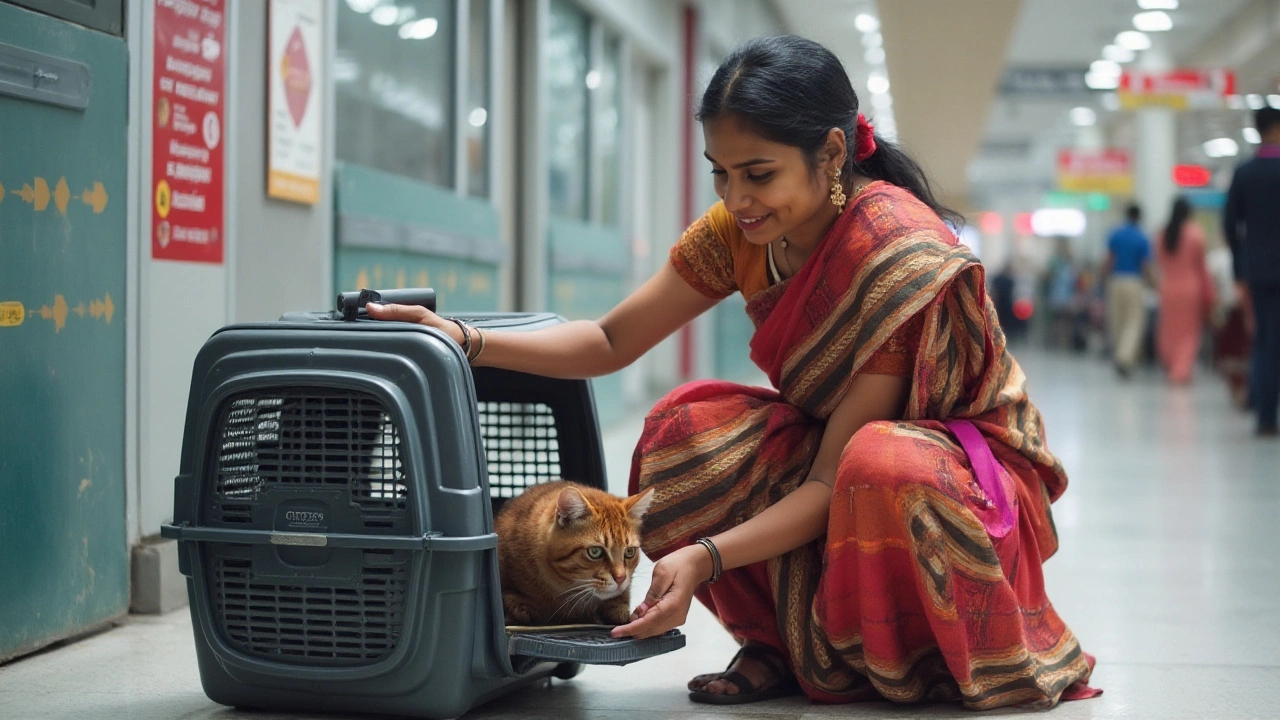
The Airport Security Checkpoint Experience
Navigating the airport security checkpoint with your beloved pet can initially feel overwhelming. However, understanding what to expect can make all the difference. The TSA views pets as an extension of your carry-on luggage during the screening process, which might sound odd but simply implies that both you and your pet must undergo security checks. The first thing to note is that your pet must be in a carrier until you reach the x-ray screening point. Here, you’ll be asked to remove your pet so the carrier can be screened separately. It’s essential to have a harness or leash ready so your pet doesn’t escape amid the chaos of a bustling airport.
You'll walk your pet through the metal detector. If you or your traveling pets trigger any alarms, be prepared for a hands-on inspection. This is usually quick, harmless, and conducted in a manner that ensures your pet’s safety and comfort. Patience is your best ally during this time, as other travelers may seem in a hurry, but the TSA officials are trained to manage this process smoothly. Based on experiences shared by avid pet travelers, keeping your demeanour calm can help your pet feel more secure in the unfamiliar surroundings.
An experienced traveler once shared, "The key to a successful trip is calmness. My dog Lucy never enjoys airports, but when I stay relaxed, she does too."
Another vital step is preparing for the additional swab test for explosive residues. This involves TSA officers wiping the animal’s harness or collar with a special cloth, which is then analyzed. It should be noted that this is a standard procedure and nothing to be alarmed about. Understanding and anticipating these steps allow you to preemptively discuss the process with the officers if there are any concerns about your pet's behavior or health conditions.
Timing is essential as security lines vary in length based on airport traffic. During peak travel times, arriving extra early can be a practical measure to ensure a stress-free experience. Having ample time at your disposal will provide you with flexibility, preventing any rushed decisions that might escalate anxiety both for you and your four-legged companion. Remember, positive reinforcement works wonders. Reward your pet with a treat or gentle praise after clearing the checkpoint, reinforcing good behavior and associating the process with positive outcomes.
Here’s a quick reminder: always check the specific TSA procedures applicable to your departure and arrival airports. Some airports have dedicated lanes for passengers with pets, allowing a more relaxed and faster screening process. Researching beforehand and familiarizing yourself with these policies can help make this part of your journey as seamless as possible. As the popularity of pet travel continues to rise, agencies are continually refining their approaches to accommodate our furry travel buddies in a thoughtful and efficient manner.
Choosing the Right Pet Carrier
Choosing the right pet carrier is like selecting a home away from home for your furry travel buddy. It's not just a temporary resting place; it's a crucial part of your traveling experience and an important factor in how well your pet copes with the journey. To start with, you must consider the size of your pet. A suitable carrier allows your pet to stand, turn around, and lie down comfortably. Cramped spaces can increase your pet's anxiety, especially in the new and bustling environment of an airport. Many airlines have their own specific requirements for carrier dimensions, so it's vital to check those out ahead of time to avoid any hiccups at the airport. In addition to size, the material of the carrier plays a significant role in comfort and safety. Soft-sided carriers can be more comfortable for your pet and are often easier to maneuver in tight cabin spaces. However, if you have a larger pet traveling in cargo, a sturdy, hard-sided crate may be the best option to ensure safety during transit.
Ventilation is another crucial aspect when picking out a carrier. Carriers should have ample mesh or air holes to ensure a constant flow of fresh air, which helps keep your pet calm. This airflow also minimizes heat buildup, which can be particularly important on long journeys. The locking mechanism of your carrier should be secure to prevent any unexpected escapes but also easy enough for you to open without fuss when necessary. Simultaneously, don’t forget the weight of the carrier, especially if you're traveling alone and handling a larger pet. Ergonomically designed handles or shoulder straps can make all the difference. It’s the small details like these that can lead to a smoother journey.
Beyond the physical attributes, your pet's comfort is paramount. Introducing your pet to the carrier well before the trip can help. This allows time for familiarization, reducing stress when it’s time to travel. Place familiar-smelling items, such as a beloved blanket or toy, inside the carrier. This not only provides comfort but reassurance amid the otherwise unfamiliar surroundings. For more effective preparation, consider the words of Dr. Jennifer Coates, a respected veterinarian, who said,
"A carrier isn't just a cage; it’s a sanctuary during travel. Acclimatization should start weeks ahead to ensure a positive association with the carrier."It’s also useful to gradually increase the length of time your pet spends in its carrier in the run-up to the trip, again to encourage a positive connection rather than a negative one.
If you're still unsure, here’s a quick checklist to help determine the right carrier: First, is your pet comfortable to move? Then check that the carrier meets airline regulations for both cabin and cargo situations if needed. Inspect the durability of materials, with well-functioning zippers or latches and sufficient ventilation. Finally, check the portability—try carrying it for a longer time to judge its comfort. Investing in the right carrier can mean the difference between a harrowing journey and a peaceful trip for both you and your pet. This decision, armed with all the knowledge above, ensures peace of mind knowing you’ve laid the foundation for a stress-free flight.Pet travel isn't just about getting from point A to B; it's about making the journey as pleasant as the destination itself.

Special Considerations and Tips
Traveling with pets can be both an exciting and challenging endeavor. While the thought of having your pet accompany you on a journey can bring joy, potential obstacles might cause some anxiety. However, awareness of specific pet travel considerations is essential to ensure a stress-free experience for both you and your furry friend. One of the first things to consider is the health of your pet. This requires a visit to the vet to ensure they meet travel requirements and, importantly, that they are healthy enough for the journey. For some destinations, certain vaccinations might be necessary, and a health certificate may be required.
Another important aspect is acclimating your pet to their travel carrier well in advance. This will not only make them more comfortable but also reduce anxiety levels. A good tip is to leave the carrier open in your home with a cozy blanket or favorite toy inside. This allows your pet to familiarize itself with the space as a resting area. Once they see it as a safe haven rather than a strange confinement space, the journey itself becomes significantly smoother. Also, consider the emotional well-being of your pet—some pets benefit from a light sedative prescribed by the vet, though this should only be administered with professional supervision.
Now, when it comes to airport experiences, timing matters. Arriving at the airport early provides ample time to deal with any unexpected issues that may arise. Traveling during times when the airport is less crowded can also greatly reduce stress levels, offering both you and your pet a more pleasant experience. You might also want to check if the airport has installed pet relief areas. These designated zones are a boon for pet travelers, allowing them to relieve themselves before a long flight. Pet relief facilities are becoming more common in major airports, and it's worth researching whether your departure airport has them. Many frequent travelers with pets highly regard these for their convenience.
When we look at the screening process, certain aspects stand out as crucial. The TSA requires travelers to remove pets from their carriers during security checks and carry them through metal detectors. Pets might feel more vulnerable and anxious during these moments, so maintaining a calm and reassuring demeanor is important. If you're traveling with someone, coordinating who holds the pet and who handles the luggage can make the process smoother. Keep in mind that treats are a fantastic tool—they can help distract and calm your pet during potentially stressful situations. TSA procedures may seem a bit daunting at first, but with the necessary steps and some background knowledge, they become much more manageable.
Interestingly, according to a report by the International Pet and Animal Transportation Association, over two million pets and other live animals are transported by air annually. This sheds light on the importance and scale of pet travel. “The pet travel industry is dynamically evolving,' notes a representative from the association, 'and it's exciting to see how accommodations and services are improving to prioritize pet well-being." This insight emphasizes the growing awareness and improvements being made routinely to accommodate pet travel as a seamless part of air travel. Always remain informed of the latest policies and amenities offered by airlines and airports to make this experience as smooth as possible.

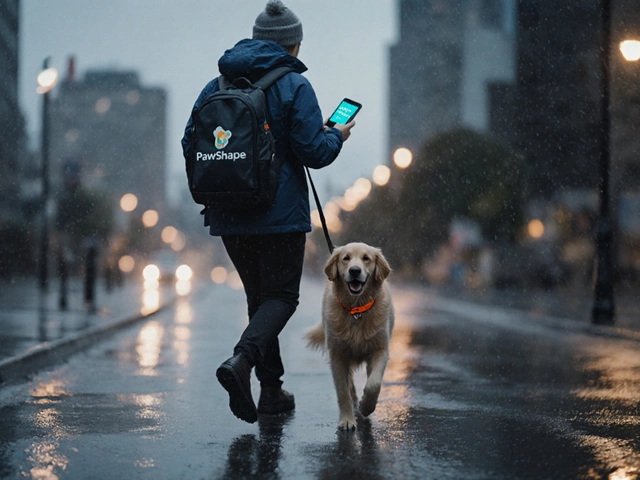

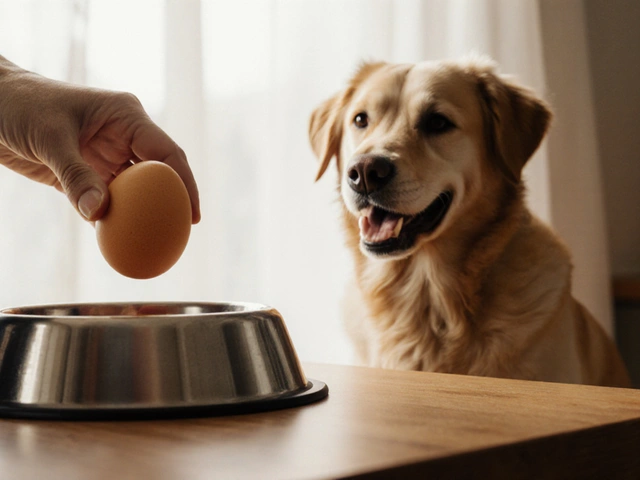
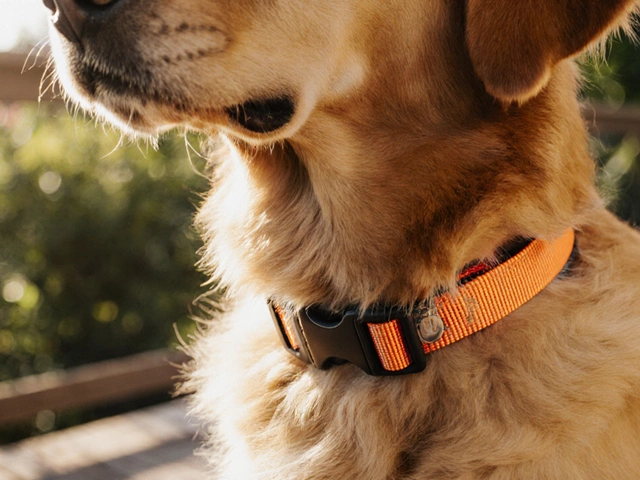

Write a comment